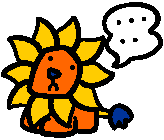
-----------------------------------------------------------------------
#39 昆虫についてはどうなんでしょうか? やはり権利を持っているんでしょうか?
-----------------------------------------------------------------------
権利について考える前にまず、「昆虫についてはどうなのか?」という問題を
取り上げてみましょう。
厳密に言うなら、昆虫というのは、昆虫綱に属する小さな無脊椎動物のことで、
成体は3対の脚と3つの部分から成る胴体、それに通常、2対の羽を持つのが
特徴です。ここでは、クモやムカデやダニなどの、似かよった無脊椎動物をも
含めた、広義の昆虫の定義を適用したいと思います。
昆虫は脊椎動物の中枢神経系とは異なる、神経節神経系を持っています。神経
節と呼ばれる、局所的なニューロンの集合体を持つのが、特徴です。神経節は
それが存在する体のセグメント(部分)とつながり、分化しています。
神経節どおしは、互いに接続していますが、その接続は個体全体を統一すると
言うよりも、局所的な連携という形で機能します。たとえば、胴体にそって流
れる様な、ムカデの脚の動きは、体節間の連絡によって調節されています。
ある種の動物(たとえばロブスターやタコなど)においては、頭部の神経節が、
非常に複雑な行動を可能とするほど、大きく複雑なものとなっています。 イ
カ(昆虫ではありませんが、やはり神経節神経系を持つ無脊椎動物です)は、
犬と同じくらい知能が高いと考えている人もいます。昆虫は初歩的な学習能力
を持っており、実際に多くの人が知能とみなす能力を、見せます。
クモの持つ技術や狡猾さはよく知られています:それらすべてを、単なる本能
として片付けられるものかどうかは、議論の余地があります。
ある限られた範囲内であれば、ミツバチには間違いなく学習能力があります。
特定の色のとまる場所に報酬を用意してやると、最初にその色のところに戻っ
てきます。また、食べ物がある場所をおぼえて、その情報を仲間に伝えます。
ただし、こうした学習能力は極めて特化しており、限られた事柄においてのみ
発揮されます。
ここまで書いた様な、精神活動に加えて昆虫が痛みや苦痛を感じることを示唆
する徴候もあります。
たとえば、ミミズの持つ神経系は体が傷つけられた時に、麻酔作用のある物質
を分泌します。こうした反応は、脊椎動物にも見られるもので、一般的には、
苦痛をやわらげるための仕組みであると考えられています。
一方では、こうした麻酔物質は、体温調節や食欲のコントロールなどといった、
鎮痛作用とは関係の無い作用にも関わっています。とは言うものの、体の組織
が傷ついた際にそうした物質が分泌されるという事実は、大変、示唆的です。
ミミズは、釣り針にひっかけられた時に、激しくのたうちまわったりもします。
そうした見方に対する反論としては、別の観察事例があげられるかと思います。
たとえば、たとえば、餌にありついているスズメバチの腹部をもぎとっても、
頭の部分は刺し続けていたりします。(おそらくは、苦痛を感じることもなく?)
ある生き物に痛みを感じる能力があるかどうかについて、ピーター・シンガー
は3つの基準をあげています。
1) 行動面における兆候が存在すること
2) しかるべき、神経系を持っていること
3) 痛みを感じることに、進化上の有用性が存在すること
基本的な意味においては、昆虫はこの3つの条件を満たしている様に見えます。
さて、これで昆虫の権利の問題と取り組む準備ができました。
まずはじめの問題として、我々の産業と言うものは、昆虫の利用の上に成り立
っているわけではないのだから、この問題は他の動物の権利の問題ほど、切実
なものではない言う指摘があります。しかし、それは事実ではありません:は
ちみつや、絹やコチニール/カルミン(*1)などによって、巨大な産業が成り立
っています。そして、言うまでもなく、農薬や殺虫剤の使用は無数の昆虫に、
死をもたらしています。
もし仮に、その指摘が事実であったとしても、すべての動物に対して、首尾一
貫した原則を適用しなくても良いという理由にはなりません。昆虫も動物の世
界に属する生き物である以上、昆虫を一般的な動物の権利の議論から排除しよ
うと言うのなら、それ相当の論拠がなくてはならないはずです。
オペラント条件づけ(*2)ができる動物にだけ、権利を与えるべきだ--とかいっ
たように、神経系の複雑さの一定のレベルによって、線を引くべきだとする人
もいます。
その線引きには納得せず、別のところに線を引くべきだと主張する人もいます。
痛みや苦痛を感じる能力の度合いによって、生命の重要性もかわってくるのだ
と考える人もいます。
そうした人たちは、その生命の重要度に応じて、権利を積極的に保証する対象
の切捨てを行うべきだとも言います。その切捨ては、無脊椎動物よりも下、昆
虫よりも上でなされるものなのでしょうか? それともそもそも切捨てなんて
するべきではないのでしょうか?
これは動物の権利の支持者たちの間でも、今なお、活発に議論されている問題
の一つです。残酷さのない暮らしのために努力している人たちには、「疑わし
きは被告人の利益に」の原則にのっとって、可能な限り広い範囲に権利を認め
ようという考えの人もいます。確かなのは、昆虫に対する不必要な残酷な行為
は避けることができるという点です。
昆虫に権利を与えることに関する、実際的な問題に関しては、FAQ #40と
#41でとりあげています。
DG
私はみなさんに兄弟愛や個性の大切さを分かって欲しいと思ってい
ますが、それは単に人間に対するものだけではありません。地を、
はう生き物なども含めた、すべての生き物の個性の大切さを分かっ
て欲しいのです。
マハトマ・ガンジー(政治家、哲学者)
決定的な線はどうやって引かれるべきなのだろう? ..それを決め
る質問は、「理性を持つか?」でも、「話をできるか?」でもない。
「苦痛を感じるか?」だ。
ジェレミー・ベンサム(哲学者)
参照:
#22、
#40、
#41、
#47
訳注) *1. コチニール/カルミン
南米に棲息するコチニール(エンジ虫)という昆虫を煮て、コ
チニール色素(またはカルミン色素)と呼ばれるえんじ色の色
素を抽出する。染色、食品添加物、化粧品等に使われる。
*2. オペラント条件づけ
動物が行動する際の動機づけの手法。
ある特定の「自発的行動」の結果として、報酬が与えられた
(ある色の箱には餌が入っているとか)場合、その行動の発生
率があがるかという実験などの様に、動物の学習能力の研究に
使われる。

...............



#39 What about insects? Do they have rights too?
Before considering the issue of rights, let us first address the question "What about
insects?". Strictly speaking, insects are small invertebrate animals of the class
Insecta, having an adult stage characterized by three pairs of legs, a segmented body
with three major divisions, and usually two pairs of wings. We'll adopt the looser
definition, which includes similar invertebrate animals such as spiders, centipedes, and
ticks. Insects have a ganglionic nervous system, in contrast to the central nervous
system of vertebrates. Such a system is characterized by local aggregates of neurons,
called ganglia, that are associated with, and specialized for, the body segment with
which they are co-located. There are interconnections between ganglia but these
connections function not so much as a global integrating pathway, but rather for local
segmental coordination. For example, the waves of leg motion that propagate along the
body of a centipede are mediated by the intersegmental connections. In some species
the cephalic ganglia are large and complex enough to support very complex behavior
(e.g., the lobster and octopus). The cuttlefish (not an insect but another invertebrate
with a ganglionic nervous system) is claimed by some to be about as intelligent as a
dog. Insects are capable of primitive learning and do exhibit what many would
characterize as intelligence. Spiders are known for their skills and craftiness; whether
this can all be dismissed as instinct is arguable. Certainly, bees can learn in a limited
way. When offered a reward from a perch of a certain color, they return first to
perches of that color. They also learn the location of food and transmit that
information to their colleagues. The learning, however, tends to be highly specialized
and applicable to only limited domains. In addition to a primitive mental life as
described above, there is some evidence that insects can experience pain and
suffering. The earthworm nervous system, for example, secretes an opiate substance
when the earthworm is injured. Similar responses are seen in vertebrates and are
generally accepted to be a mechanism for the attenuation of pain. On the other hand,
the opiates are also implicated in functions not associated with analgesia, such as
thermoregulation and appetite control. Nevertheless, the association of secretion with
tissue injury is highly suggestive. Earthworms also wriggle quite vigorously when
impaled on a hook. In possible opposition to this are other observations. For example,
the abdomen of a feeding wasp can be clipped off and the head may go on sucking
(presumably in no distress?). Singer quotes three criteria for deciding if an organism
has the capacity to suffer from pain:
1) there are behavioral indications,
2) there is an appropriate nervous system, and
3) there is an evolutionary usefulness for the experience of pain.
These criteria seem to satisfied for insects, if only in a primitive
way. Now we are equipped to tackle the issue of insect rights. First, one might argue
that the issue is not so compelling as for other animals because industries are not
built around the exploitation of insects. But this is untrue; large industries are built
around honey production, silk production, and cochineal/carmine production, and, of
course, mass insect death results from our use of insecticides. Even if the argument
were true, it should not prevent us from attempting to be consistent in the application
of our principles to all animals. Insects are a part of the Animal Kingdom and some
special arguments would be required to exclude them from the general AR argument.
Some would draw a line at some level of complexity of the nervous system, e.g., only
animals capable of operant conditioning need be enfranchised. Others may quarrel with
this line and place it elsewhere. Some may postulate a scale of life with an ascending
capacity to feel pain and suffer. They might also mark a cut-off on the scale, below
which rights are not actively asserted. Is the cut-off above insects and the lower
invertebrates? Or should there be no cut-off? This is one of the issues still being
actively debated in the AR community. People who strive to live without cruelty will
attempt to push the line back as far as possible, giving the benefit of the doubt where
there is doubt. Certainly, one can avoid unnecessary cruelty to insects. The practical
issues involved in enfranchising insects are dealt with in the following two questions.
DG
I want to realize brotherhood or identity not merely with the beings called
human, but I want to realize identity with all life, even with such things as
crawl upon earth.
Mahatma Gandhi (statesman and philosopher)
What is it that should trace the insuperable line? ...The question is not, Can
they reason? nor, Can they talk? but, Can they suffer?
Jeremy Bentham (philosopher)
SEE ALSO: #22, #40-#41, #47




